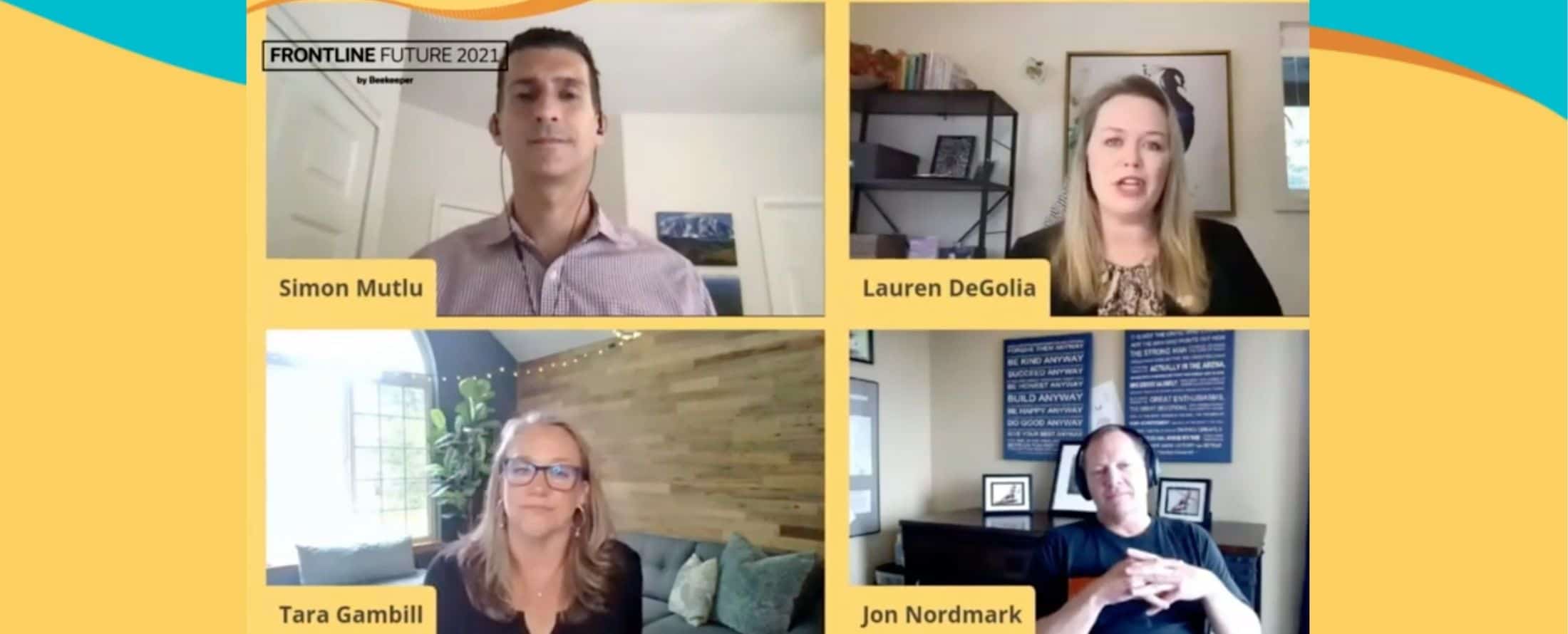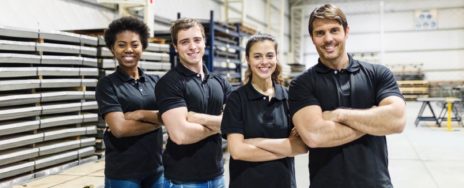For companies with frontline workforces, building a tech stack can be a complicated task. But technologists can help align everyone’s needs for a unified vision that makes the most of the digital systems that support a company’s operations.
At Beekeeper’s first Frontline Future 2021 virtual summit, we discussed the multi-layered topic of IT tech stacks and explored how companies can integrate technology that supports the unique needs of frontline workers.
The panelists who shared their insights at this session included:
- Lauren DeGolia—Business Consultant and Strategist
- Tara Gambill—Senior Director of Business Enterprise Systems at MOD Pizza
- Jon Nordmark—Co-founder, CEO, Iterate.ai
Here’s a recap of our Frontline Future session panel, “How to Get the Last Mile Out of Your ITTech Stack.”
Leveraging Technology to Support Large Workforces
With experience working on the technology side for a large organization with 75,000 employees—75% of them on the frontlines—Lauren DeGolia found that “Part of the challenge is that you’re never gonna really be able to corral all of the information. There’s always going to be information that’s out in the wild somewhere.”
To optimize their tech stack, DeGolia and her tech team had to determine the following:
- The tools that were being used
- What kind of communication was most important for each department, like HR and communications
- What was the spend and the functionality
- How everything tied together on the backend
Working with a century-old organization, DeGolia came up against several outdated legacy systems and processes. She found that “as you continue to iterate and identify what are the most critical pieces of information, you’re able to identify then how to break down silos, how to reduce costs, and really tune in to how to reach that frontline employee and make them feel like they’re part of the bigger why.”
Then she added:
“It’s really important to build your communication strategy around reaching frontline workers and making them feel included in what’s going on with the organization.”
The SaaS Advantage: Flexibility
One insight that was clear in this session: SaaS offers the greatest flexibility when it comes to getting the most out of your tech stack. Cloud solutions are easy to use, efficient, and offer a cost-benefit ratio that makes them hard to beat.
As the CEO and Founder of AI-powered innovation platform iterate.ai, Jon Nordmark has “built a low code platform that could connect into enterprise tech stacks,” creating a middleware environment. He said “We found a lot of large companies didn’t have the bandwidth on the IT team to integrate any of these technologies. It wasn’t about whether they’re smart enough or capable. They have a lot of work to do with just running the business.”
MOD Pizza opened its first Seattle restaurant in 2008. In 2015 they decided to expand, and just celebrated the opening of their 500th U.S. store. According to Tara Gambill, MOD’s Senior Director of Business Enterprise Systems, they are a 100% SaaS shop.
“Saas is what has enabled MOD to support that aggressive growth while we are continuing to manage data and security and compliance. You build the big things first and then you come back, refine, redefine and continue that flywheel.”
“It’s kind of exciting to be able to build into the new SaaS world and use all these connectors and start up technologies,” Nordmark added.
“With these new systems, it’s the flexibility that comes with it. They’re modular. If you put in one technology and it’s not working, it’s really easy to unplug it and put another one in. And to me that’s the way to be competitive in the future.”
Centralized Decision Making vs. Shadow IT
For DeGolia, building a robust tech stack meant balancing every user’s unique needs within a legacy organization where shadow IT was the norm.
“It’s really hard in a shadow IT organization to get a comprehensive view that everyone buys into, especially when you’re talking technologists versus business leaders versus frontline workers. Everyone has a different use case. Everyone has different priorities.”
DeGolia had to tackle different teams using different tools and find a way to create consistency, “because that shadow IT piece is always going to exist,” DeGolia said. “You really need to get down to the brass tacks of what is mission-critical for the communication tool you’re trying to implement and then how do you get everyone on board to support the implementation and that vision you’re trying to create.”
According to Gambill, for companies like MOD Pizza who need immediacy, “There’s where your shadow IT can’t go for long.” In the restaurant industry they have the challenge of “100% turnover” and having a mobile tool in their tech stack supports centralized decision making by including everyone.
“You’ve got the ability through Beekeeper to establish a communication connection within day one of hire,” Gambill stated.
“We use Beekeeper to listen whether it’s through surveys or streams, etc. And to celebrate. We really want to have a lot of gratitude. Beekeeper is a phenomenal way for us to digitally share that kind of gratitude.”





